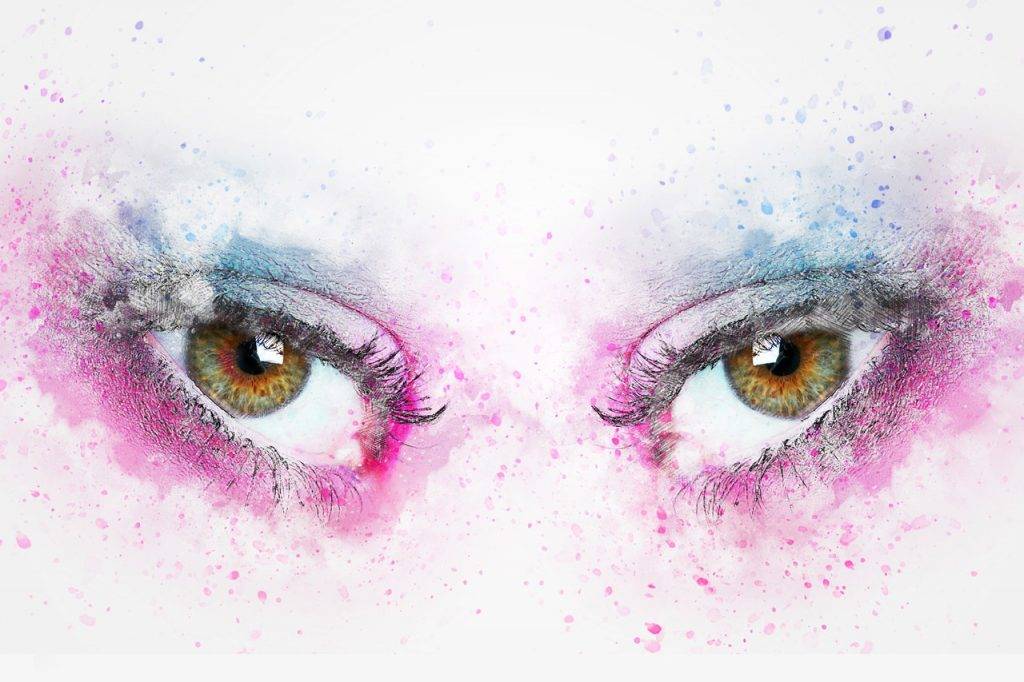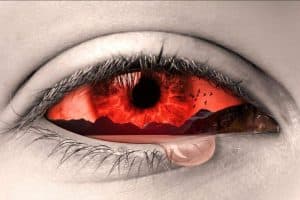What is the function of the eyelid?
Your eyelids play a crucial role in protecting your ocular health.
Eyelids cover the delicate cornea. Without the eyelids, the cornea would be exposed to many harmful infections, injuries, and diseases— causing damaging effects on ocular health and vision.
Eyelids distribute and eliminate tears. When the eyelids close, they distribute tears over the eye’s surface— enabling proper lubrication of the eye. The eyelids also eliminate tears by pushing them through the lacrimal puncta into the tear duct.
Anatomically speaking, the eyelids consist of:
- An anterior layer of skin and orbicularis oculi muscle
- A posterior layer of tarsus and conjunctiva
- Several glands along the eyelid margins
Eyelid conditions
Eyelid conditions or disorders include any type of inflammation, infection, benign and malignant tumors, and structural problems. Most eyelid conditions are not sight-threatening or life-threatening. However, they do cause many uncomfortable symptoms such as pain, burning, and foreign-body sensation.
Proper treatment of eyelid conditions relies heavily on an accurate diagnosis. Treatments vary depending on the condition— some conditions may respond to warm compresses and antibiotics, while others will require excision, cryotherapy or laser treatment.
How are eyelid conditions diagnosed?
A comprehensive eye exam will provide the essential information required for an accurate diagnosis of an eyelid condition.
The following factors should be investigated during the exam:
- The duration of the problem
- A change in size or appearance of a lesion
- Recurrence of a tumor that has been treated
- History of skin cancer
Your eye doctor will examine the structure of your eyelid, and look for signs of:
- Drooping
- Excess tissue
- Retraction problems
- Lesions
- Inward/outward turning
- Excessive tearing
- Misdirected eyelashes
Eyelid conditions are categorized into two different types:
- Inflammatory eyelid disorders
- Mechanical eyelid disorders
Inflammatory eyelid disorders
Blepharitis
One of the most common eyelid problems is blepharitis, or inflammation of the eyelid margin. This condition is caused by oil and bacteria that coat the edge of the eyelid, near the base of the eyelashes.
Symptoms include:
- Redness
- Itching
- Burning
- Tearing
- Crusting around eyes
- Foriegn body sensation
Blepharitis can often lead to a stye or a chalazion.
Blepharitis treatment often includes: applying warm compresses, cleaning your eyelids with a moist washcloth and baby shampoo, and applying antibiotic ointment.
Blepharitis is a chronic condition— eyelid hygiene may need to be continued indefinitely.
Meibomianitis
Meibomianitis, or posterior blepharitis, occurs when the oil glands at the base of the eyelashes become clogged— causing the eyelid to thicken and become crusty. Meibomianitis treatment is similar to blepharitis treatment.
Lacrimal duct obstruction
The lacrimal duct is responsible for draining tears from your eyes into your nose. When it becomes blocked, inflammation or infection can occur.
Common symptoms include:
- Irritation
- Burning
- Itching
- Tearing
Many obstructions clear on their own, but warm compresses or a gentle massage to help clear the blockage, can speed up the healing process. Topical or oral antibiotics may be prescribed to treat an infection. If all other treatments are ineffective, surgery may be recommended as a last resort.
Chalazion
A chalazion is a lump that forms under the skin of the eyelid. It can develop when the meibomian gland becomes obstructed or inflamed, causing a release of the gland’s contents into the surrounding soft tissue. This in turn, leads to a lipogranulomatosis reaction, causing a lump to form. When the chalazion begins to develop, it may be tender to touch, though it typically evolves into a non-tender lump.
In some cases, a secondary infection occurs within the chalazion.
Treatment includes warm compresses, and topical antibiotics if signs of infection are present. If the lesion persists, it may be surgically removed.
Stye/hordeolum
A stye, or hordeolum, is a red, sensitive bump that appears on the edge of the eyelid as a result of a bacterial infection of an oil gland, sweat gland, or hair follicle. An internal stye is caused by an infection of the meibomian gland and may evolve into a chalazion. An external stye is caused by an infection of the glands located anterior to the lash line.
Styes usually recede without treatment over time. However, applying warm, moist compresses several times per day, can help it heal faster. If you have a stye that doesn’t recede within one to two weeks, you may need to take antibiotics. Incision and drainage are required for non-resolving lesions.
Find an eye doctor near you who can help diagnose and treat any eyelid conditions you may have.
SEE RELATED: Myokymia (Eye Twitch)
Mechanical eyelid conditions
Blepharospasm
A blepharospasm is an involuntary spasm of the muscle in the eyelid that causes repetitive twitching, blinking, or fluttering. It can affect people of all ages, especially those who are sleep deprived or stressed.
There are different types of blepharospasm:
1. Benign essential blepharospasm (BEB)
Benign essential blepharospasm is a form of dystonia that causes involuntary muscle contractions as a result of abnormal functioning of the basal ganglia function. It develops gradually, and occurs on both sides of the face. This type of blepharospasm can affect men and women, but it occurs most frequently among older women.
Symptoms are usually experienced during the day, and cause light sensitivity and difficulty keeping your eyes open.
As BEB progresses, the spasms occur more frequently with greater intensity, often forcing the eyes to close and causing functional blindness— even though the eyes are healthy.
While surgery may work to stop muscle spasms, it may also cause permanent damage to the eyelid.
Therefore, this condition is usually treated with medications, including injections of botulinum toxin— that help to relax or paralyze the muscles that have the spasms.
2. Hemifacial blepharospasm
Hemifacial blepharospasms affect only one side of the face. This type of blepharospasm is usually caused by irritation of the facial nerves. In some cases, a tumor can cause a hemifacial blepharospasm.
An MRI is typically recommended if you are experiencing one-sided facial spasms.
Blepharoptosis
Blepharoptosis, also known as ptosis, occurs when the upper eyelid droops. If the eyelid droops far enough, it can block your pupil, resulting in partial blindness.
Ptosis has a variety of possible causes, including:
- Congenital ptosis results from a developmental problem with the levator muscle, responsible for lifting the upper eyelid. One eye is usually affected, and surgical correction will be required if the eyelid droops low enough to obstruct vision— otherwise, your child may develop a lazy eye or permanent vision loss.
- Aponeurotic ptosis is usually the result of aging. Over time, the effects of gravity or repetitive opening and closing of the eyelids, stretch the connective tissues in the eye that attach to the levator muscle. In most cases, both eyelids are affected, though often, one will droop lower than the other. This condition is corrected with surgery.
- Myasthenia gravis can cause ptosis, in its early stages. Myasthenia gravis is a rare disease that causes progressive muscle weakness in the face and other body parts. Seek immediate attention if you suspect that you have this condition. Early diagnosis is crucial for optimal treatment results.
Other causes of ptosis may include:
- Eyelid infection
- Eyelid trauma
- Congenital muscle diseases
- Stroke
- Brain tumor
- Brain aneurysm
- Nerve damage from diabetes
Coloboma
A coloboma is a gap within the eye tissue that appears at birth. It can affect one or both eyes, and occurs as a result of abnormal eye development during gestation. Colobomas that are noticed at birth can signal an undiagnosed syndrome. Colobomas are often corrected with surgery.
Dermatochalasis
Dermatochalasis develops when excess eyelid skin or fat hangs over the edge of the eye and blocks vision. This condition is treated with surgery.
Ectropion
Ectropion occurs when one of the eyelids, often the lower eyelid, turns outward and exposes the inner eyelid. This condition can cause dryness, irritation, and redness.
Ectropion is treated with eye drops to keep the eye moistened, and steroid ointment to reduce inflammation. However, surgery is often necessary for correction of the condition.
Entropion
Entropion occurs when one of the eyelids, often the lower eyelid, turns inward. When this happens, the eyelashes rub against the cornea and surrounding soft tissues, causing irritation, redness and a mucus discharge. Entropion frequently occurs in older adults.
Treatment usually involves eye drops and steroid cream, and corrective surgery.
Facial palsy
Facial palsies, such as Bell’s palsy, can affect the eyelid— resulting in an inability to close the upper eyelid, or reduced muscle tension in the lower eyelid. If you have facial palsy, protect your eyes by using eye drops and taping your eyes shut to help prevent corneal abrasions or ulcerations.
Trichiasis
Trichiasis occurs when your eyelashes grow in different directions and rub against the cornea.
Trichiasis can cause:
- Pain
- Redness
- Irritation
- Tear production
This condition can be corrected by removing the eyelashes. If the lashes continue to grow incorrectly, they can be permanently removed by extracting the hair follicles.
How can you protect your eyelids?
You can prevent the development of eyelid conditions by following these tips:
- Wash your hands often with warm, soapy water for at least 15 seconds.
- Clean your eyelids regularly with warm water and baby shampoo to help prevent inflammation and infections.
- Avoid touching or rubbing your eyes.
- Use anti dandruff or medicated shampoos to control bacteria that may cause blepharitis.
- Avoid allergens that cause eye redness or swelling after exposure to them.
- Use hypoallergenic eye makeup if regular makeup causes irritation.
Some eyelid conditions do not cause any long term problems and will go away with time, or once an infection clears.
Many eyelid conditions can lead to chronic disorders, such as dry eye syndrome, astigmatism, or even vision loss.
LEARN MORE: Guide to Eye Conditions
Schedule an exam with an eye doctor if you are experiencing a problem with your eyelids. There are many different types of eyelid conditions, and a variety of effective treatment options to relieve uncomfortable symptoms and treat the conditions.
Don’t hesitate— an early diagnosis will increase your chances for optimal treatment results.










